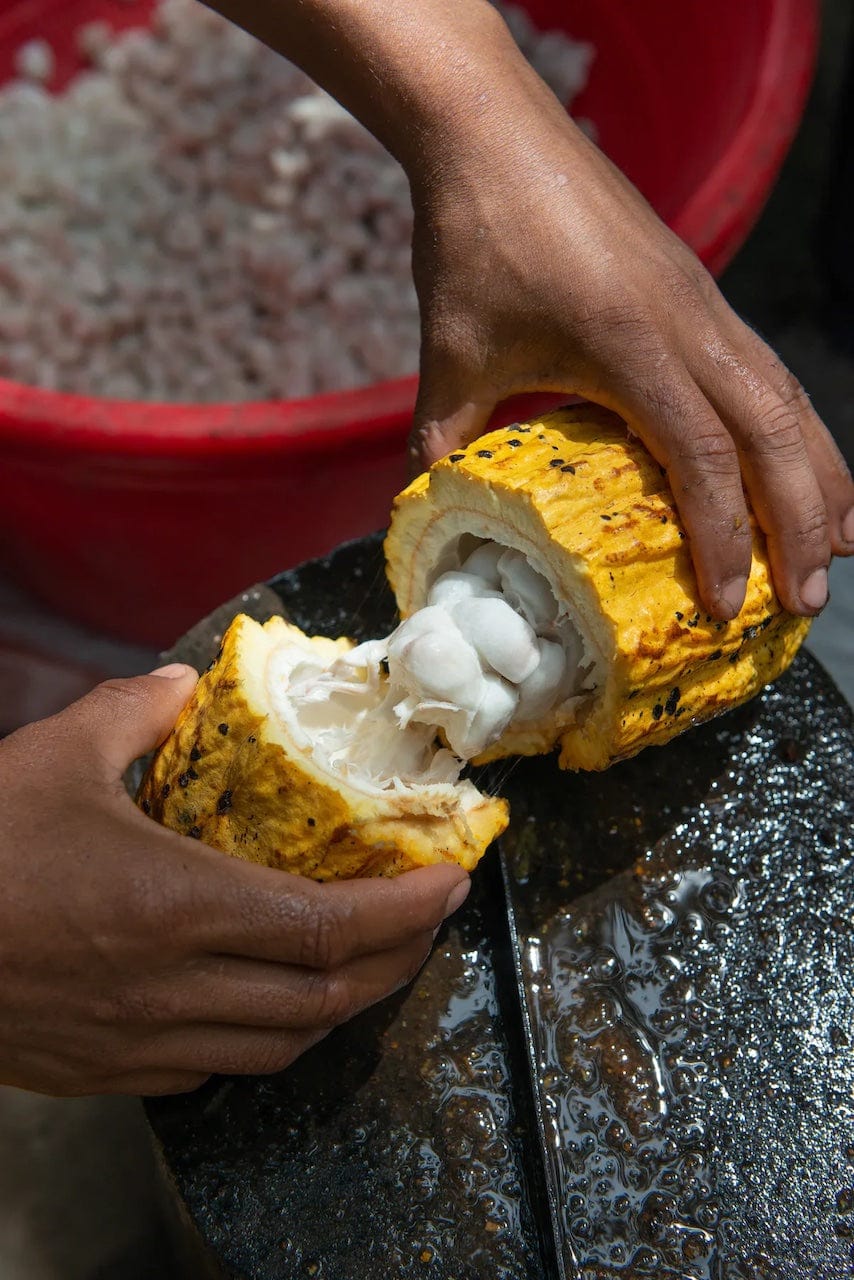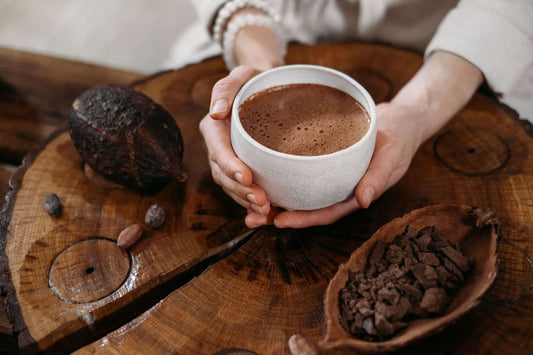Navigate this article
Cacao Powder debunked
When many people think of making chocolate, they imagine going straight to the tin of cacao powder in their pantry. Few people realize though that cacao powder is an industrial derivative, missing some of the most important nutritional benefits of whole food chocolate.
Ceremonial cacao is a whole food, made from premium whole cacao beans with nothing added or removed, and with minimal processing.
Cocoa powder, in contrast, has had the cocoa butter removed from it. Both of these derivatives, cocoa powder and cocoa butter, are typically made from the lowest quality cacao beans.
These cacao beans are typically roasted at very high temperatures, then shelled and ground. Then they are high pressure processed to extract cocoa butter from the cacao paste.
Lastly the cocoa powder is hammered into fine particles. Ironically, this process is done primarily to obtain cocoa butter, which is a high value natural fat used in cosmetics and expensive foods, and it is of much higher value than cocoa powder.
The cocoa powder is a byproduct which is then marketed as a superfood!
Ceremonial cacao is far more potent medicinally. Ceremonial cacao still contains the high grade cacao butter, which is the best carrier fat for the medicinal properties of cacao.
To receive the full health benefits of cacao, the carrier mechanism, in this case cacao butter, is crucially important to making sure that the body absorbs the benefits rather than having them just pass right through.
The difference is clear - try making a cacao drink with just cacao powder and water (it doesn't taste very good) - and then try making a cacao drink just cacao paste and water, and you'll see how much more nutritious and nourishing the latter is.
You may be curious about simply buying cocoa powder and then adding another fat, such as coconut oil. After all, it’s much cheaper than buying well sourced ceremonial cacao.
But it is a shortcut that is not a whole food, and your body can tell. Firstly, the vast majority of commonly available cocoa powders (even those marketed as raw), are made from low quality cacao beans.
Second, separating the cacao beans into components and then trying to reconstruct it with another fat is a ridiculous exercise when you think about it for a moment! Because you could just use whole food ceremonial cacao, which is less processed and is far more effective as it contains the exact fats that are designed to work with cacao.
Chocolate is medicine. The low cost of industrial chocolate candy has conditioned people to not want to pay money for their chocolate.
However investing in good chocolate goes both towards your health with a quality product and it goes towards good living conditions for the cacao farmers.
When you invest in good chocolate and especially ceremonial grade cacao you get a whole food that is alive in spirit. This is invaluable!





